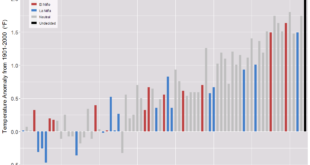 The Our World in Data post You want to reduce the carbon footprint of your food? Focus on what you eat, not whether your food is local by Hannah Ritchie (1/24/2020) provides the graph copied here. From the article:
The Our World in Data post You want to reduce the carbon footprint of your food? Focus on what you eat, not whether your food is local by Hannah Ritchie (1/24/2020) provides the graph copied here. From the article:
As I have shown before, food production is responsible for one-quarter of the world’s greenhouse gas emissions.
Overall, animal-based foods tend to have a higher footprint than plant-based. Lamb and cheese both emit more than 20 kilograms CO2-equivalents per kilogram. Poultry and pork have lower footprints but are still higher than most plant-based foods, at 6 and 7 kg CO2-equivalents, respectively.
Transport is a small contributor to emissions. For most food products, it accounts for less than 10%, and it’s much smaller for the largest GHG emitters. In beef from beef herds, it’s 0.5%.
The article itself doesn’t have data, but there are links to related Our World in Data posts about food with data.
